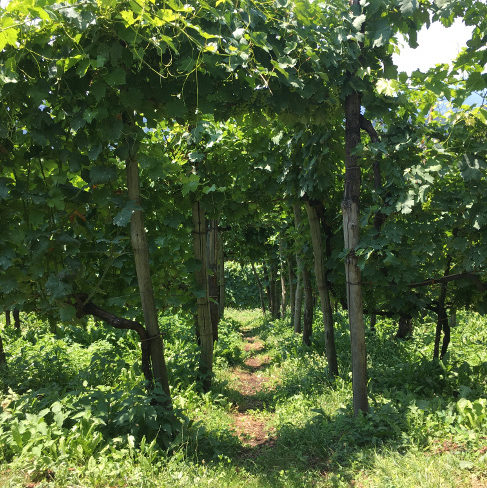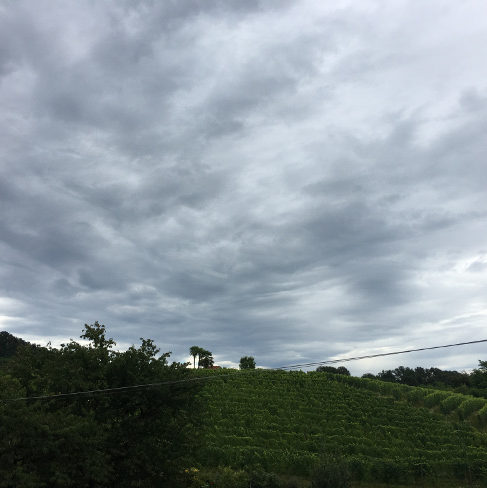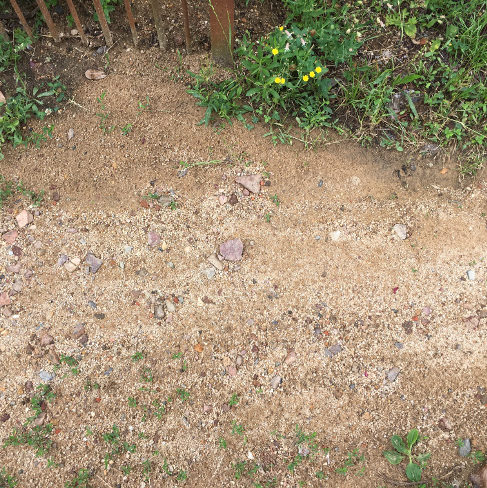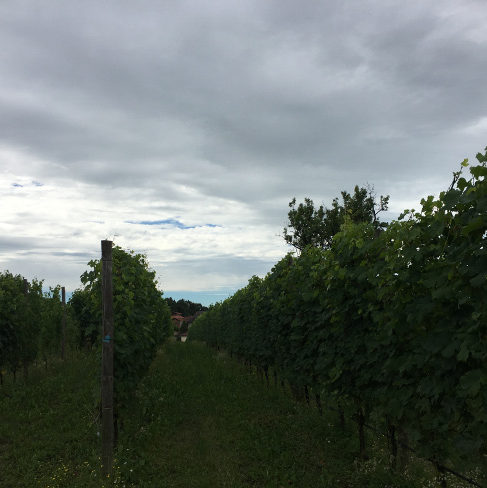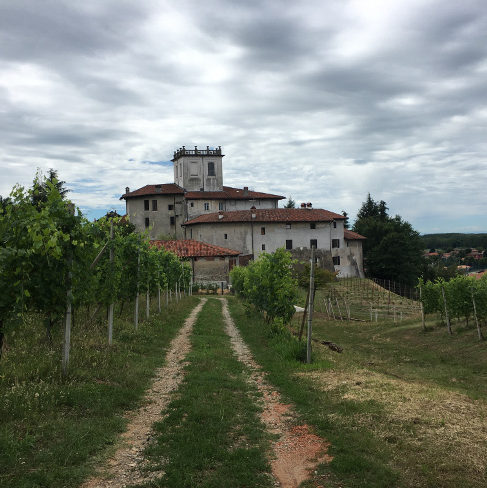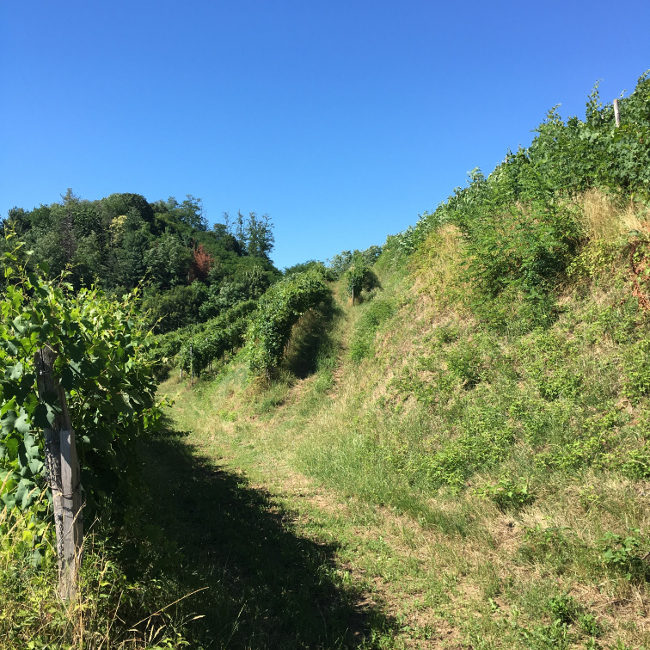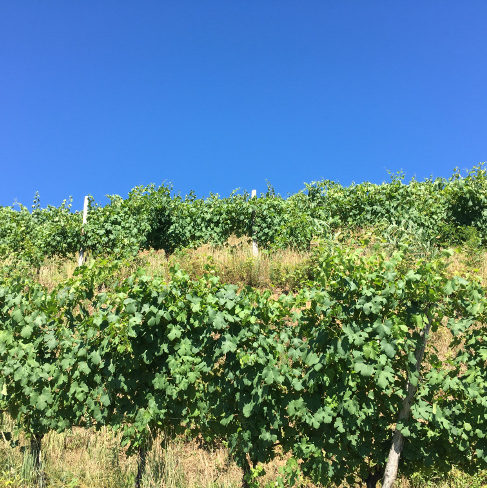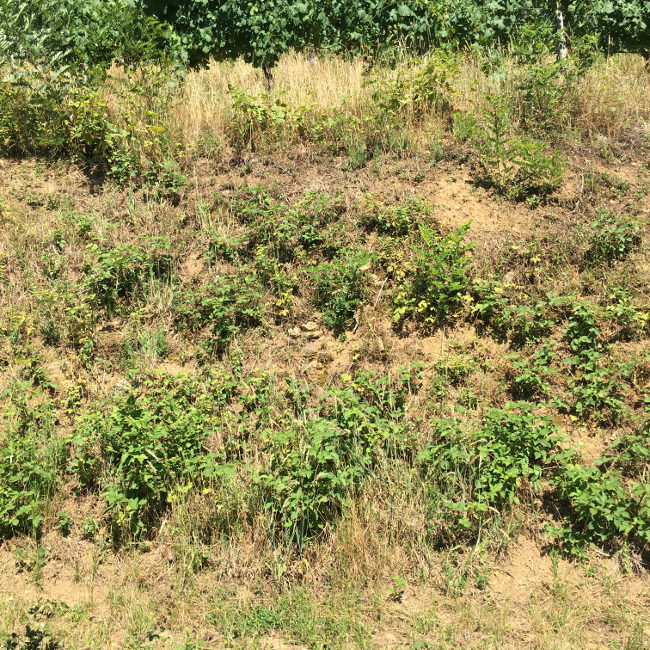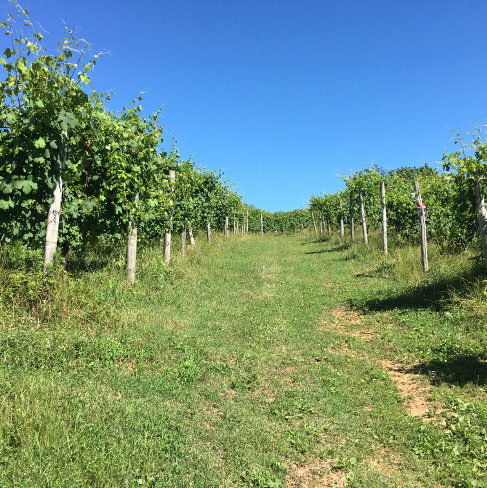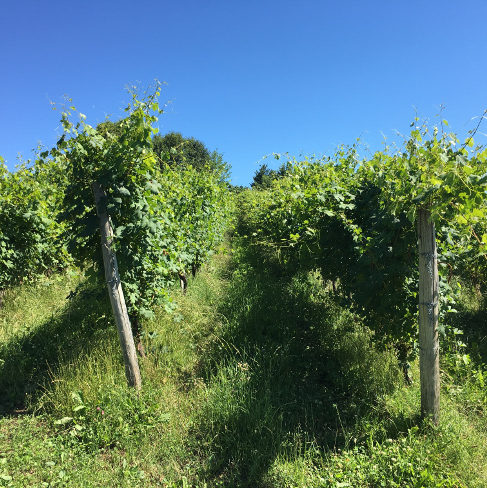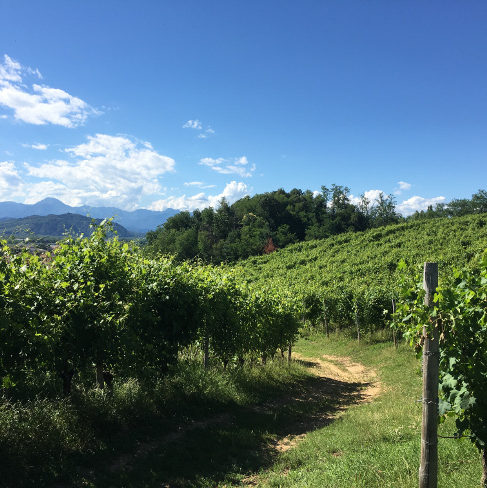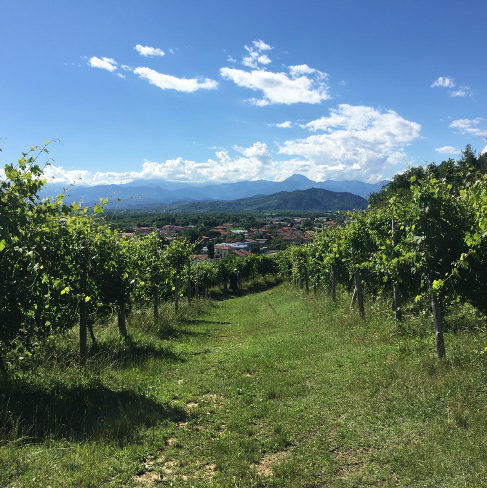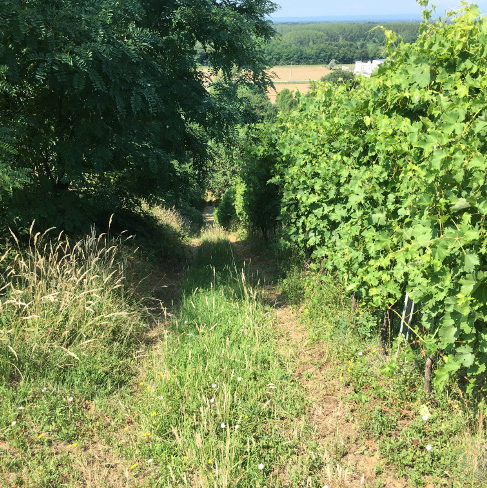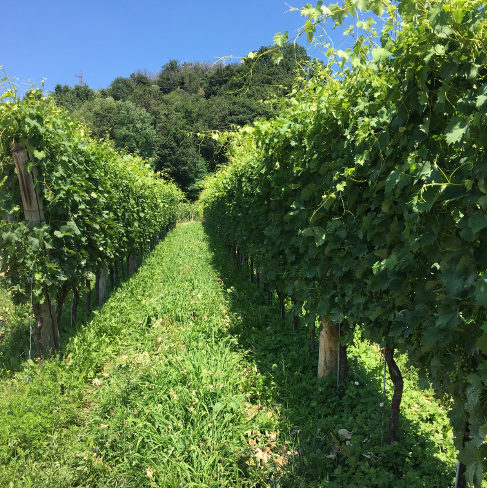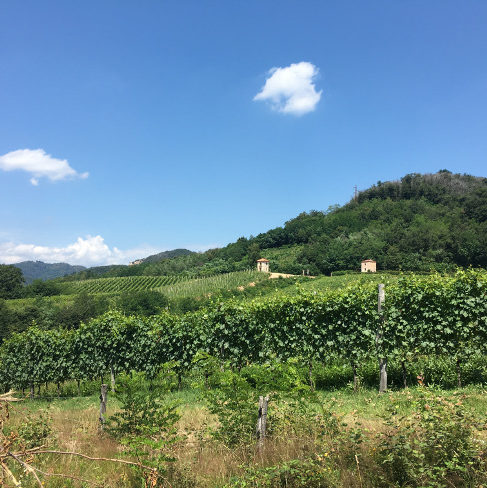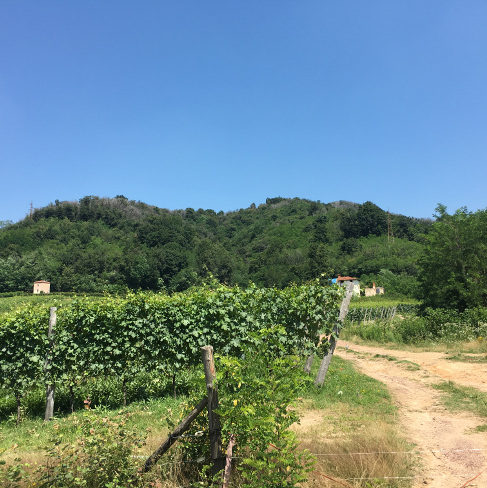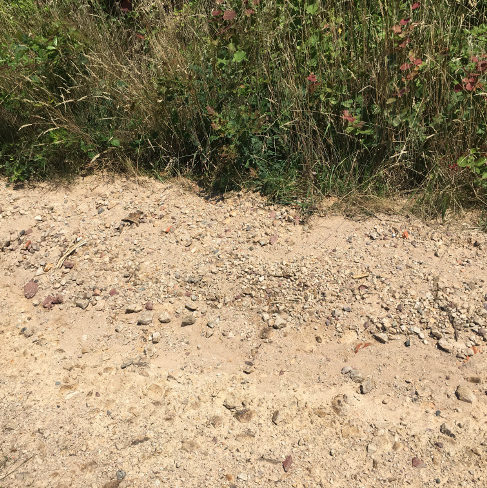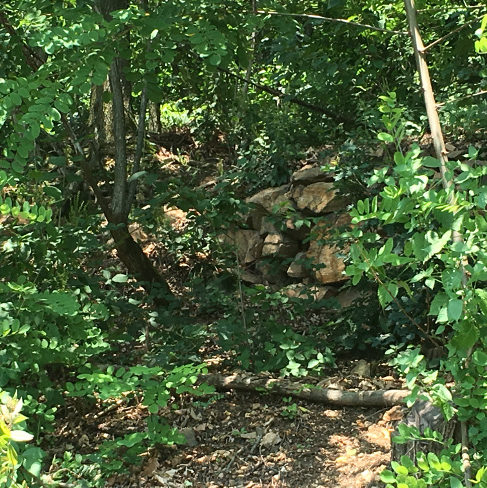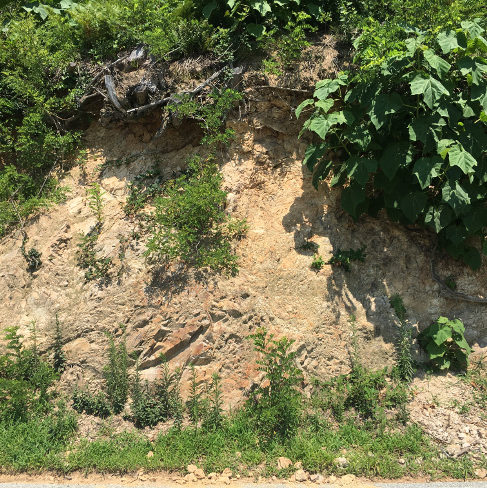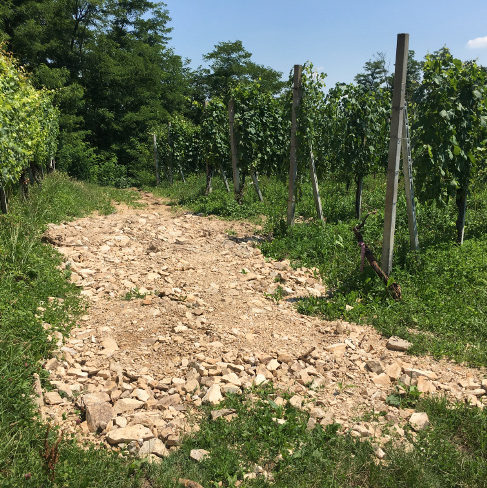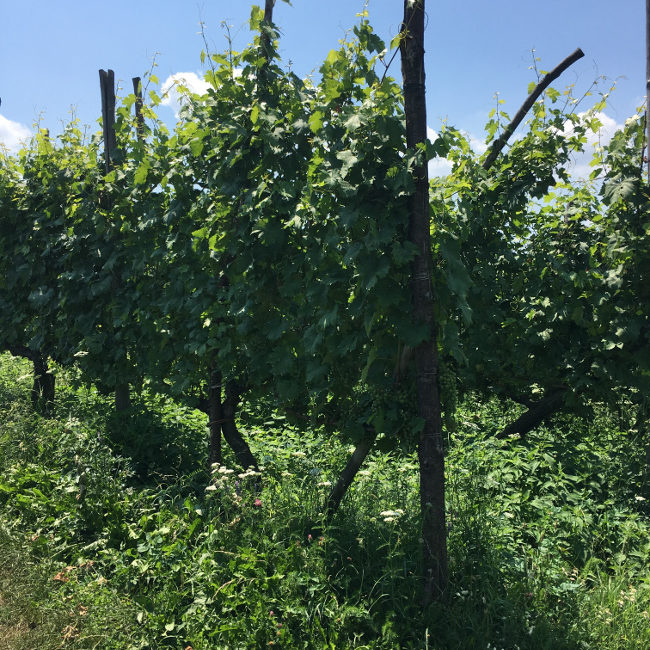Two of the areas in Italy that have most intrigued me over the years are Alto Piemonte and Campania. When I decided to create Le Storie Wines I knew that I would put a lot of energy into developing these parts of the portfolio and in building relationships with the people who are shaping these areas and making the best wines. Below is brief introduction to Alto Piemonte, its geology, geography, meteorology, wines, and appellations. This is the first instalment of many that will focus on individual areas within Alto Piemonte and some of the best producers like Cristiano Garella who, at less than 30 years of age, has possibly done more to shape Alto Piemonte in the last 10 years than any other single person and will be the subject of our second feature.
Overview:
Alto Piemonte is an area that many people do not have much experience with. We are talking about an area that is located about 100 miles north of Barolo and Barbaresco. Nebbiolo is the most important grape and, at one time, this area was the most important for wines made from Nebbiolo. You will also find many wines made from Croatina and Vespolina and many Nebbiolo-based wines that have one or both of these included in smaller amounts. The best wines from Alto Piemonte more than rival their more famous counterparts to the south. Wines from Alto Piemonte are very well known for their heightened aromatics, high acidity, aggressive tannins, and lighter colors, these factors, though they may lead many people to look elsewhere for their wines, create a paradise for those of us who look for freshness, balance, age worthiness, and food friendliness in wine. I think there are two main issues that have created the most common misperceptions of wines from this area, which are that the wines are either not great or too austere. It is true that many of the best wines from Alto Piemonte are austere in their youth and do not reveal their depth and complexity until they have had several years in the bottle, but there are so many wines from this area that are meant to be consumed young and are ready upon release to offer tons of pleasure in drinking. These wines range from Rosato to unoaked, fresh bottlings of Croatine, Vespolina, and Nebbiolo. Finding the right examples of these wines will prevent austerity from being an issue. Perhaps the biggest problem has been the poor treatment that wines receive during travel to the US and once they have arrived. Many wines are shipped across the ocean in containers that are not temperature controlled, sit in distributor warehouses that are not temperature controlled, and, often, in restaurants or wine stores where they are subjected to high and low temperature extremes so that, even when you find an older bottle, the quality will not be high and the true character and potential of the wine will not be revealed as a result of poor storage and handling. Fortunately, more and more restaurants and wine stores are taking storage seriously and more importers are committing to the “Cold Chain”, which means ensuring the temperature is controlled during shipping, storing, and delivering to their customers.
Alto Piemonte is truly a special place. It is a treasure waiting to be found and it was, almost, wiped away by phylloxera and industrialization. Once, one of, the most planted to vine areas in Italy, Alto Piemonte had been reduced from 40,000ha under vine to less than 800ha by the end of WWII. Many of the appellations that are now most recognized had been decimated and just a few years ago were on the verge of extinction with tiny areas remaining under vine: Boca 9.6ha, Bramaterra 26ha, Fara 9.8ha, Lessona 17ha, Ghemme 25.7ha, Gattinara 64ha. Pylloxera, which came in the late 1800s, had destroyed most of the vineyards and left people looking for a better and easier life, which new factories in some of Italy’s biggest cities offered. The families who had once farmed in this area and produced what were, during their peak, the most sought-after wines in northern Italy, moved to the cities and the vineyards became forests, which they still are in many places today. As you drive through the area people will point to patches of 100-year-old vineyards in the trees. It is very hard to purchase land in this area today, especially around Boca, because there were so many tiny plots and the original owners never came back from the cities to claim or care for them. The restoration and revitalization of Alto Piemonte is has been a painstaking, slow process that is being carried out by some very passionate people. See below for more detailed information on Alto Piemonte.
Geography:
What we now consider Alto Piemonte is a big territory between Biella, Vercelli, Novara and Verbania. In general, I could say that we consider Alto Piemonte the area that was completely included in the old Novara province until WWII. It's a big territory going west to east: the area close to Biella with some old crus of the Coste della Sesia, Lessona, the seven municipalities of the Bramaterra appellation (Masserano, Brusnengo, Roasio, Villa del Bosco, Curino, Lozzolo and Sostegno), then Gattinara. The Sesia river which separates the Vercelli province from Novara province and Ghemme, Boca, Fara and Sizzano. You can imagine the Alto Piemonte in three big wine areas: Coste della Sesia (including Biella and Vercelli appellations), Colline Novaresi (the secondary appelllation for Ghemme, Boca, Fara and Sizzano, all the Novara province) and then Lozzolo area.
Geology, Meteorology, Appellation:
Carema (DOC) – 30-50% more rain than Barolo but the rain is lower than other northern piedmont areas because it sits just below “virtual cliffs” on the alpine range. It is also for this reason, the coldest growing region in northern Piemonte. The slate soil (500,000-700,000 years old) in Carema sits at around 750 meters above sea level. It tends to be colder in the spring and winter than Boca but warmer in the summer months. Bud break is later here than Boca, about 5 days. Harvest dates are as late as 7-15 days after Barolo during the end of October for a potential alcohol of 13-13.5%. The vineyards are all terraced and done by hand. The minimum of 85% Nebbiolo can be blended with other local “non-aromatic” varieties. It must be aged a minimum of 24 months (12 months in wood) or 36 months for a Riserva.
Lessona (DOC) – sea-sand soil with an acidic pH. It has some of the most acidic soils in the world. 2 million years old, rich in iron and potassium which increases the pH of the wine and gives it a salty, gentle and soft taste. It has twice the rain of La Morra in Barolo. Lessona has one of the highest amount of rain in the appellations of Northern Piedmont. Lessona is also a wine of great quality, vinified in this commune since the 12th century, using Nebbiolo grapes and up to 25% of other local grapes (Vespolina and Bonarda). The Lessona DOC was created in 1976.
Bramaterra (DOC) – 70% more rain than Barolo. Soils are porphyric (volcanic) with an acidic pH. The soils are variable because there are 7 municipalities running from Masserano to the west all the way to Lozzolo in the east. The wine consists of 50 - 80% Nebbiolo, with Croatina (max 30%), Bonarda and Vespolina (max 20%) . The wine matures 18 months in high-grade steel tanks and in oak, then at least one year on the bottle
Masserano - the furthest west and closest to Lessona is on yellow porphyr soils with high iron content. It is very rocky soil that easily erodes.
Brusnengo - the warmest area of Bramaterra, going towards the east is more rocky than Masserano and is still porphyric soils but gives more fruit to the wines than most of the other appellations. It is the best growing area for Croatina in Bramaterra.
Roasio - the next going east and continues the volcanic soil but richer, more fertile than those to the west.
Sostegno - located on limestone and porphyric soils above Roasio and has no real commercial production at the moment. It is like Brusnengo, a rocky area with little topsoil but it is much cooler than Brusnengo. It’s a good future prospect for viticulture as the climate changes. It has the coolest climate because of the elevation and more wind from one of the highest alpine mountains, Monte Rosa at 15,208ft (Monte Bianco is 15,774ft.)
Curino - also has no production at the moment. It is high up like Sostegno. Soils are very rocky and erode easily. Good potential also in this colder climate. Only 1 hectare planted at the moment.
Villa del Bosco - is where Sella started in 1886 with Bramaterra. The soil is more stable as it has the same amount of iron as the other appellations but has more magnesium which keeps the soil from oxidizing. It is also rich in potassium which is very important for the saltiness of the wine. It also gives lower pH than the rest of Bramaterra and closer to the pH of Lessona. The color of the soil is darker here with more quartz in the soil. The area has about the same climate as Gattinara.
Lozzolo – the farthest east, it was part of the Gattinara DOC but is now Bramaterra. It is the same basic soil as Gattinara which is very rocky Porpyric soil. The climate is in the middle of the road for Bramaterra.
Ghemme (DOCG) – the soil is much more fertile than the other areas because of the mix of alluvium brought in by glaciers and clay-like silt from the river Sesia. It has a higher concentration of nutrients and organic substances in the soil because of this combination. The climate is close to the same as Gattinara and Bramaterra. The rain is lower than Lessona but about the same as the others. Romagnano-Sesia is the other commune of the appellation but the soils remain relatively the same. The wine is made primarily from Nebbiolo (minimum 75%) and like Gattinara, it may be blended with Bonarda di Gattinara and Vespolina. It must be aged a minimum of 34 months (18 months in wood) or 46 months (24 months in wood) for a Riserva.
Gattinara (DOCG) – 70% more rain than Barolo. The climate can be one of the warmest in north Piemonte. Picking dates usually 7-10 days later than Barolo/7-14 days later than Barbaresco. All the vineyards are concentrated on one single hill and aspect of the sun plays a large role in harvest dates from 7-10 days difference. Soil there is porphyric and granitic with an acid pH, so this renders the wine higher in pH. The climate is around the same as east Bramaterra, which is cooler than Ghemme and much warmer than Carema and even Lessona. The wine is made primarily from Nebbiolo (known locally as Spanna[1]) which must constitute a minimum 90% of the wine and may be blended with up to 10% Bonarda di Gattinara and no more than 4% of Vespolina. The wine is aged in oak barrels for 1 year or two years if it is a Riserva, with an additional two years of ageing in the bottle.
Boca (DOC) – is located on glacial moraine soils. Close to Lago di Maggiore. It is cold like Carema, but there is big difference between Carema and Boca, which is much further away from the mountains so during nighttime in the summer it can be colder than Carema but daytime is warmer, which can be seen in the wines. There are not a lot of producers. Maggiora (10% of the appellation) is another appellation within Boca but doesn’t have a notable difference in soil, that is volcanic porphyric. Aged for 38 months (at least 18 in wood) and composed of 45-70% Nebbiolo, 20-40% Vespolina, up to 20% Bonarda Novarese (Uva Rara).
Of Interest:
Some very important differences between the Langhe and Northern Piedmont are:
1. Bloom is just about 2-3 days difference.
2. Fruit set is usually 100 days before harvest. 5-7 days after Barolo
3. Harvest time. 7-12 days after Barolo area.
4. Potential alcohol is completely different. Barolo ripeness could be 14.5-15.5% while 13-13.5 for northern Piemonte areas for optimal phenolic maturity.
5. The pH of the soils are completely different as well. The soils in the north are more acidic so the pH
levels are much higher whereas the soils are more alkaline in Langhe because of the limestone/calcium so the wines have a lower pH. Barolo/Barbaresco – soil pH can be 7.80-8.80 pH which is a basic pH. Northern Piemontese Nebbiolo based wines – 4.2-5.50pH which is extremely acidic.
6. The soils in the north are lighter than the Langhe so drainage is better.
7. The northern Piemonte areas are much drier during the picking season than the Langhe which is ideal for diverse phenolic ripeness for Nebbiolo.
8. In theory, in Barolo, if they are picking 15% potential alcohol grapes, the grapes in the north are 11-11.5% alcohol on that same day.
9. Nebbiolo is often blended with other red grapes in the north whereas Barolo and Barbaresco must be 100% Nebbiolo.
Hopefully, I have piqued your interest in Alto Piemonte. If you would like recommendations on producers or specific wines, please feel free to contact us. We will also be continuing to post features on producers and wines from Alto Piemonte, as well as the rest of the wine world, in this section of our site.

